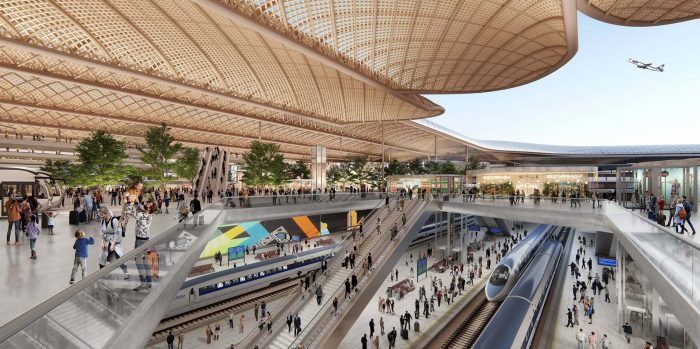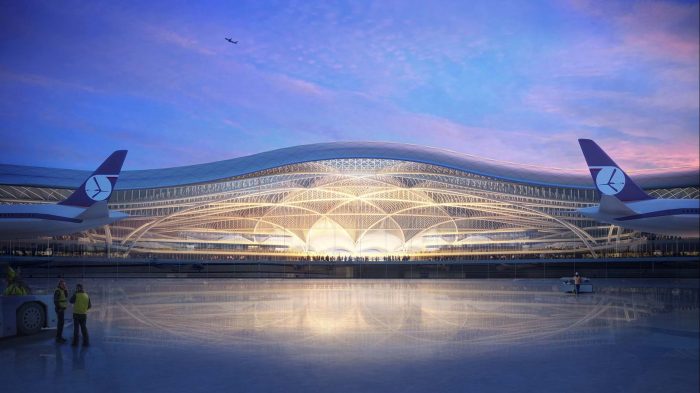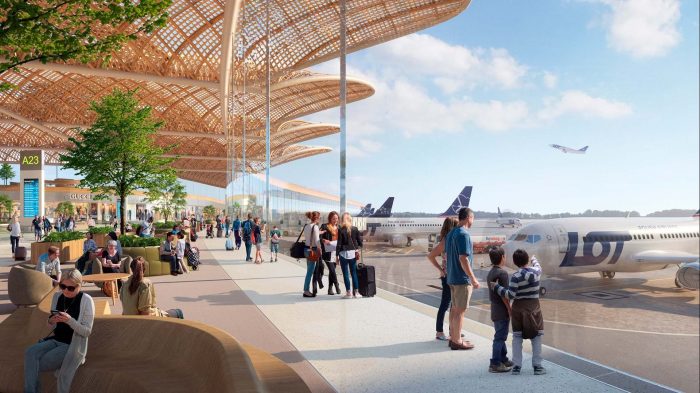A limited partnership led by Foster+Partners and Buro Happold is selected to design the new CPK airport; (Centralny Port Komunikacyjny airport) in Poland between Warsaw and Łódź.
The 3,000-hectare site will begin construction next year, with completion set for 2028. CPK will replace the current Chopin airport as the primary airport serving the Polish capital.
New Phenomenal Polish CPK Airport to Be Designed by Foster + Partners
The airport’s anticipated capacity is up to 40 million passengers initially, but it can quickly grow to accommodate the target of 65 million passengers by 2060.
In the words of Grant Brooker, Head of Studio, Foster + Partners, he stated, “We are proud and excited to be chosen by CPK as the designers of this project. We will collaborate to create a model for the future of integrated transportation design. We believe this project will completely revolutionize travel across the country and beyond. The vision of woven architectural form is deliberately and strongly expressed. It could shape the building and guide the passengers through its spaces while also serving as a powerful symbolic reference to Poland’s rich cultural heritage and the united strength of its people.”
The CPK airport is built around a sizable interchange plaza surrounded by grasslands and receives a lot of natural light. The plaza links the three primary forms of transportation—air, rail, and road. This area serves as the administrative center, forming effective and simple-to-follow connections that empower passengers to choose environmentally friendly forms of transportation.
Passengers will flow naturally from the plaza toward the aircraft due to the pitched roof above it. The idea is to create a comfortable and welcoming environment focusing on passenger satisfaction. The layout is practical and adaptable thanks to the few level changes, enabling smooth passenger flows and efficient transfers. Visual connections to the surrounding environment also aid orientation. The airport’s design is also made to be interchangeable and fit together, enabling the transportation hub to change with the constantly shifting operational requirements.





